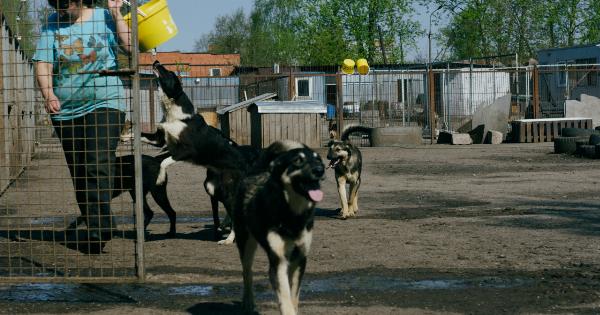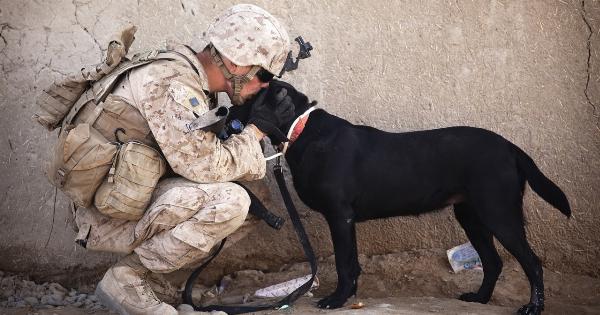As dog owners, we strive to keep our furry friends happy and healthy. However, just like humans, dogs can sometimes experience discomfort or illness. It’s essential to be aware of signs that indicate your dog may not be feeling their best.
By recognizing these signs early on, you can take the necessary steps to address any issues and ensure your dog’s well-being.
Changes in Behavior
One of the first signs that your dog may be feeling uncomfortable is a sudden change in their behavior. Dogs are typically creatures of habit, and any deviation from their usual routine can indicate something is amiss.
Keep an eye out for the following behavior changes:.
- Increased aggression or irritability
- Excessive sleepiness or lethargy
- Loss of appetite
- Excessive panting or restlessness
- Excessive grooming or scratching
- Decreased interest in activities they previously enjoyed
If you notice any of these behavioral changes, it’s crucial to monitor your dog closely and consult with a veterinarian if necessary.
Physical Signs of Discomfort
In addition to changes in behavior, your dog may display physical signs that indicate they are feeling uncomfortable. These signs vary depending on the underlying cause, but common physical signs include:.
- Visible pain or discomfort (whining, yelping, or whimpering)
- Limping or difficulty walking
- Changes in posture, such as hunching or stiffness
- Excessive drooling
- Swollen joints or body parts
- Red or inflamed skin
- Changes in bathroom habits (frequent urination, diarrhea, or constipation)
- Vomiting
- Coughing or difficulty breathing
If you observe any of these physical signs, it’s essential to take your dog to the vet for a proper diagnosis and treatment plan.
Changes in Eating and Drinking Habits
An additional indicator that your dog might be feeling uncomfortable is a change in their eating and drinking habits. Dogs are typically known for their love of food, so any sudden loss of appetite or excessive thirst should be a cause for concern.
Look out for the following changes:.
- Refusing meals or only eating small portions
- Drinking excessively or frequently
- Changes in water consumption (either drinking more or less than usual)
If your dog’s eating or drinking habits have changed significantly, it may be a sign of an underlying health issue that requires veterinary attention.
Changes in Bathroom Habits
Monitoring your dog’s bathroom habits is vital in maintaining their overall health. Any changes in their urination or defecation patterns can signal discomfort or illness. Look for the following changes:.
- Increased frequency of urination
- Straining or difficulty when urinating or defecating
- Urinating or defecating indoors, even if they are typically house-trained
- Blood in urine or stool
- Diarrhea or constipation
If you notice any of these changes, it’s essential to consult a veterinarian to determine the cause and appropriate treatment for your dog.
Excessive Licking or Scratching
Dogs may lick or scratch themselves occasionally, but if it becomes excessive, it can indicate discomfort or an underlying issue. Excessive licking or scratching can be a sign of:.
- Fleas or other parasites
- Skin allergies or irritation
- Infections
- Pain or discomfort
If you notice your dog constantly licking a particular area or scratching themselves excessively, it’s important to investigate further and seek the appropriate veterinary care.
Respiratory Issues
Difficulty breathing or any changes in your dog’s respiratory patterns can be a sign of underlying discomfort. Some respiratory symptoms to watch for include:.
- Coughing
- Sneezing
- Wheezing
- Labored breathing
- Shallow breathing
Respiratory issues can be caused by various factors, including allergies, infections, or even heart problems. If you observe any of these symptoms, consult your veterinarian to determine the best course of action.
Changes in Sleep Patterns
While dogs do sleep quite a bit, noticeable changes in their sleep patterns can indicate discomfort. Keep an eye out for the following changes:.
- Inability to settle or find a comfortable sleeping position
- Restlessness during sleep
- Excessive snoring or noisy breathing during sleep
- Increased nighttime waking
If you observe any significant changes in your dog’s sleep patterns, it’s worth discussing with a vet to determine if there’s an underlying issue affecting their sleep quality.
Changes in Mobility
As dogs age, they may naturally experience some degree of mobility issues. However, sudden changes in your dog’s ability to move comfortably, or difficulty getting up or down stairs, can indicate discomfort or pain. Keep an eye out for:.
- Limping or favoring a particular limb
- Stiffness or difficulty in walking, running, or jumping
- Reluctance to exercise or play
- Reduced range of motion
If you notice any changes in your dog’s mobility, especially if they occur suddenly, consult with a veterinarian to assess the situation and explore treatment options.
Trust Your Instincts and Consult a Veterinarian
While the signs mentioned above can provide important insights into your dog’s discomfort, it’s essential to trust your instincts as a pet owner.
If you sense that something is off with your dog, even if the signs mentioned here are subtle or absent, it’s always a good idea to consult with a veterinarian. Early detection and prompt treatment can make a significant difference in your dog’s overall well-being and quality of life.
Conclusion
As responsible dog owners, it’s crucial to be observant and alert for any signs that indicate our furry companions may be feeling uncomfortable.
Changes in behavior, physical signs, alterations in eating and drinking habits, changes in bathroom habits, excessive licking or scratching, respiratory issues, changes in sleep patterns, and changes in mobility are all signs that warrant attention and may indicate underlying discomfort or illness. By recognizing these signs early and seeking prompt veterinary care, you can ensure that your beloved dog remains happy, healthy, and comfortable throughout their lives.






























